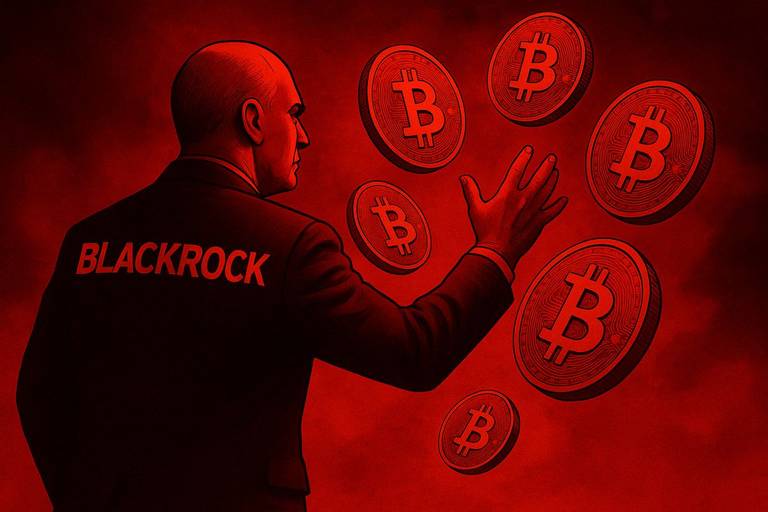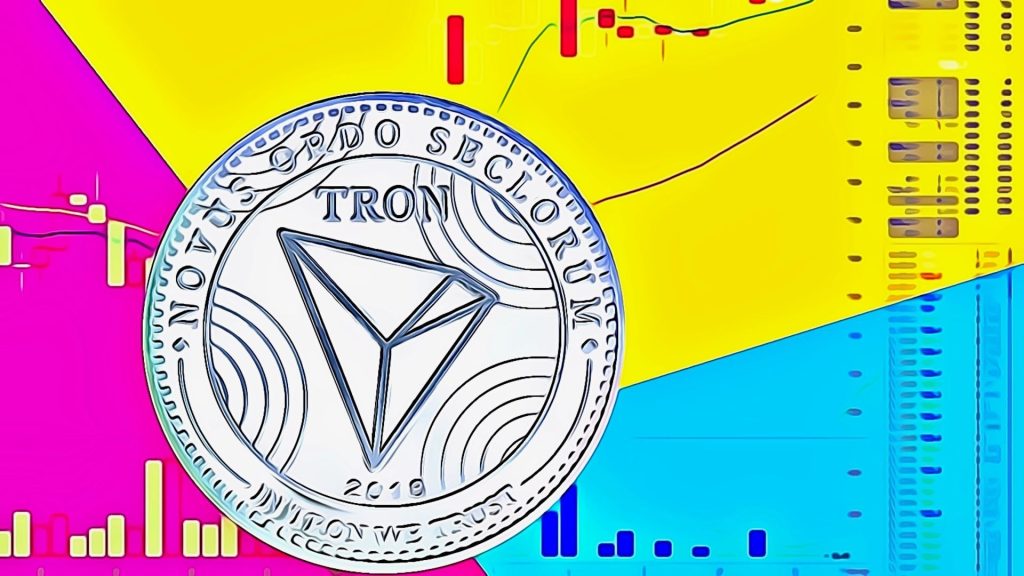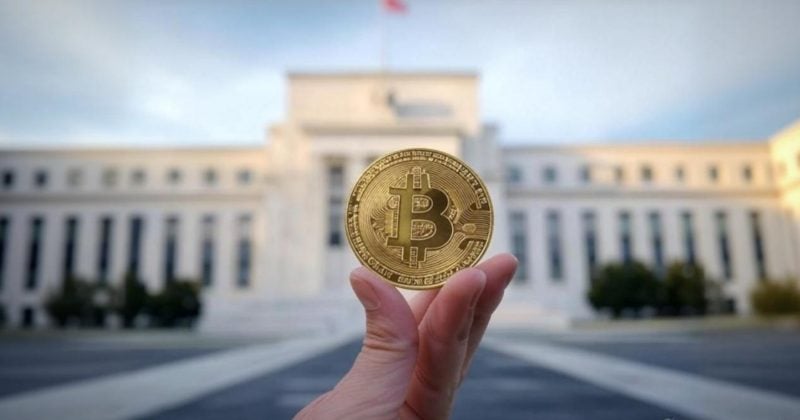
Michael Saylor, the founder of MicroStrategy, has predicted that BlackRock`s spot Bitcoin ETF, known as $IBIT, will become the largest ETF in the world within the next decade. Saylor`s forecast is based on the growing institutional adoption of Bitcoin and its monetary properties. He also mentioned that BlackRock`s ETF could buy over $600 billion in Bitcoin. Currently, $IBIT has an asset under management (AUM) of $48 billion, significantly less than the Vanguard S&P 500 ETF ($VOO), which holds $573 billion in AUM. Despite this, Saylor remains confident in the potential growth of BlackRock`s Bitcoin ETF. Additionally, he suggested that a tripling of Bitcoin`s value could lead MicroStrategy to have the largest cash pile of any company. To continue reading this as well as other DeFi and Web3 news, visit us at thedefiant.io
The Defiant
You can visit the page to read the article.
Source: The Defiant
Disclaimer: The opinion expressed here is not investment advice – it is provided for informational purposes only. It does not necessarily reflect the opinion of BitMaden. Every investment and all trading involves risk, so you should always perform your own research prior to making decisions. We do not recommend investing money you cannot afford to lose.
TRON Hits Major Milestone as USDT Supply Surpasses $70 Billion on Network

A remarkable accomplishment for the TRON ecosystem is that the total supply of Tether (USDT) now circulating on the network has exceeded $70 billion. This development emphasizes and strengthens TRON’s status as a key blockchain stablecoin platform and infrastructure that is low-cost, efficient, and offers reliable scalability. The most recent increase in USDT supply came when Tether minted yet another 1 billion tokens on the TRON blockchain. With this latest minting, TRON now carries the bulk of USDT circulating around the crypto ecosystem, besting other networks like Ethereum and BNB Chain in both usage and volume. This is a clear signal of TRON’s rising favor among USDT users, particularly in places where the traditional financial system is either ineffectual or nonexistent. The founder of TRON, Justin Sun, has long held the belief that the network can be a global, digital payment solution, as well as serving for the global storage of value. In past comments, Sun has stressed that the USDT on TRON—and, by extension, the network itself—provides an alternative to the traditional, “rails” payment system that is used by the world today; it does this, he says, in a way that is faster, cheaper, and far more reliable (and stable in terms of the value of the digital payment itself) than traditional digital payment systems that we are today all too familiar with. Milestone for @trondao Ecosystem | USDT Supply Surpasses $70 Billion! Today, @Tether_to issued another 1 billion USDT on the TRON Network, the total circulating supply of USDT on TRON has officially reached the 70 billion USD mark! TRON is reshaping global capital… pic.twitter.com/Ho9eLcwDF7 — TokenPocket (@TokenPocket_TP) April 23, 2025 Powering Global Payments and Liquidity Essentially, the attraction of USDT on TRON boils down to its usefulness. The TRON network not only processes transactions at lightning speed, but it also does so with almost no fees, rendering it suitable for both high-volume institutional users and individual remittance payments. In places such as Southeast Asia, Latin America, and parts of Africa, USDT on TRON has become a top choice for sending money across borders, for trading in a peer-to-peer fashion, and even for daily transaction-type activities. TRON’s infrastructure is becoming an alternative to traditional financial systems as global demand for dollar-backed digital assets rises. “Whether it’s for merchants looking to bypass currency volatility or for individuals sending money to family abroad, the combination of Tether’s stability and TRON’s transaction efficiency is reshaping how money moves across borders.” This is how we get paid in the future. TRON is not just conquering the stablecoin world with speed and low fees; it is also winning because of its scalability. DeFi, GameFi, and other Web3 applications are scaling globally. When developers choose where to build these applications, they are turning to TRON with increasing frequency, using it to construct fast and low-cost applications that require stable, valuable mechanisms of settlement. A Watchful Eye: Tether Freezes Suspicious Funds Even though TRON has achieved great success with USDT, the ecosystem is drawing some concern. A recent alert from MistTrack indicates that Tether has now frozen about $28.67 million worth of USDT across 12 addresses that reside on the TRON blockchain. That said, Tether isn’t just freezing USDT on TRON; MistTrack also claims that around $99,630 in USDT has been frozen on an Ethereum address. MistTrack Alert: @Tether has frozen ~$28.67M $USDT across 12 addresses on TRON, and ~$99.63K $USDT on one Ethereum address: #TRON TUPyHqY2jbcF5Q2rCmTQWBtVo84oMpLm2f TESCDkZbKWuJtuFPRSjczChuV14XHMMbMA TXLuEUEV1bNoQ1k59i9uun3XUmRjTZNXwh TS2T38JTaA8qHwnANH5H1ASUQ1RvwKzZxy… pic.twitter.com/LLPO0xcOvi — MistTrack (@MistTrack_io) April 24, 2025 These frozen addresses were reportedly engaged in dubious or unlawful activities, which underscores Tether’s and blockchain forensic teams’ attempts to keep the stablecoin ecosystem neat and tidy. This isn’t the first time Tether has busted out the emergency freeze button, though. The company has previously interceded to halt addresses linked to the scams, money laundering, and other unlawful acts. These preemptive steps send a clear signal that accountability and compliance can coexist with innovation—yes, even in decentralized environments. Tether has remained in close contact with compliance teams, law enforcement agencies, and the analytics platform MistTrack, to name just a few. The company is clearly working toward a sensible balance between user freedom and security. TRON’s Ecosystem Outlook More than simply being a number, exceeding $70 billion in USDT supply is a manifestation of how much influence TRON has attained in the global crypto economy. It has millions of users; its developer activity is on the rise; and its DeFi ecosystem is booming. All the same, TRON seems increasingly positioned as a go-to network, not just for the crypto world, but for the real economy and for large-scale digital payments. The increasing existence of stablecoins on TRON also indicates a future where financial infrastructure can be decentralized, yet accessible and compliant. We are now in an era where regulators are starting to pay much closer attention to the stablecoin space, and Tether itself actually could not have picked a better place to be issued from, as TRON is a high-performance settlement layer. TRON seems to be on an upward path, with its continued innovations, strategic partnerships, and user growth. The USDT has crossed the $70 billion milestone, but it may be just the beginning of a far larger and more profound movement toward digital finance that is borderless, stable, and efficient in terms of costs. Disclosure: This is not trading or investment advice. Always do your research before buying any cryptocurrency or investing in any services. Follow us on Twitter @nulltxnews to stay updated with the latest Crypto, NFT, AI, Cybersecurity, Distributed Computing, and Metaverse news ! The Defiant

Behind the Leaderboard – The Hidden Risk of Copy Trading
HodlX Guest Post Submit Your Post According to research by Charles Schwab UK, younger generations – particularly Z and Millennials, unlike Gen X and Boomers – accept online trading as one of the mainstream supplemental income activities. This makes many of them trader-like-minded but lacking sufficient experience, so the issue of active investment strategies remains open and usually untapped. Younger investors are also embracing broader investment opportunities, such as copy trading, which are not usually welcomed as much by their older counterparts. However, to novice investors, even if they are more advanced, leveraging strategies of master traders and thinking of it as a way to diversify the risk of the human factor may be self-delusional. Sometimes, seeing an influencer bragging about success and dropping a referral link has a huge toll on investors’ decisions. So, copy trading is not just trading anymore – it’s the influencer economy in full force. High returns, hidden volatility Given the social nature of copy trading, there’s a real danger in people placing too much faith in well-known figures in the industry, specifically, the master traders, whose successful trades can be easily replicated. The biggest risk in copy trading is not the market – it’s psychology. This situation is reminiscent of the wave of celebrity crypto endorsements that tend to surface during every bull market, often leaving seasoned traders feeling uncomfortable when these influencers make outlandish promises about token projects. While having a celebrity on board can certainly give a project a popularity boost, it doesn’t guarantee that it’s legitimate. Yet, despite a history of failures, many novice investors are still being overly influenced by prominent people in the industry. Diversification, despite being a common approach in investing, can also be very delusional. Just spreading one’s money across 10 different master accounts won’t really shield one from market behavior at the end of the day. In the crypto world, some semblance of credible diversification could only be in mixing the very copy trading, realizing all its caveats, with long-term investments or alternative investment methods like staking. The bottom line is that the investors don’t cause common risks of copy trading that much en masse, but by the platforms themselves. It’s their duty to communicate both risks and performance. When return or drawdown metrics leave out unrealized profits and losses, investors can easily be misled, leading to unrealistic expectations based on partial information. Protecting the follower on a platform level When it comes to safeguarding copy trading ethics, trading platforms usually focus on the key issue – unveiling and stopping the known account ‘boosting’ schemes. This happens when someone sets up multiple accounts – l et’s say, four – and opens ‘buy’ positions on two while placing ‘sell’ positions on the other two. After closing two ‘victimized’ accounts, the remaining ones might show impressive returns – let’s say, 80%. The trader can then repeat this cycle, eventually boasting an account with, say, 230% return. At that point, even minor gains – like one percent – can lead to outsized percentage growth – three percent – because of compounding. This creates a false sense of steady profitability when, in reality, it’s just an artificial boost from the start. Investors who see this kind of past performance might think they can expect similar results, but they’re just buying into a cleverly crafted illusion. On top of that, there’s not much incentive for platforms to keep a close eye on how traders behave. After all, it’s just a marketplace – some traders may be laid-back and cautious, while others are expected to act more aggressively. There’s a place for both types. The only twist here is that instead of pushing a casino-style wheel, someone may click the ‘follow’ button on a hyper-aggressive trader. All in all, a trading platform can offer two complete tools to protect investors – risk limits for signal providers and risk limits for investors. When it comes to risk limits for signal providers, they should be implemented in a way that prevents users from instantly altering them. Otherwise, it doesn’t serve its purpose. When the set limit is exceeded by the user, the platform intervenes in order to counteract the risky activity. This is the truly effective way to protect investors. Besides, platforms should clearly communicate those limits to the investors. For example – “ A stricter risk limit will be imposed on this master trader – if his account loses, say, 20%, all positions will be closed automatically.” That kind of enforcement action would provide a more realistic protection. The same goes for followers – platforms must allow them to rely on automated controls like stop-copy thresholds or risk multipliers. Let’s say that the investor set a loss limit of 500 USDT for the master trader. If the loss reaches this amount, all copied positions will be closed and the subscription will be terminated. Final words When entering the world of crypto copy trading, investors must understand that it inherently involves risks – there’s always a chance to win or lose. The key principle is simple and universal – never deposit more than you’re prepared to lose. Once that deposit is made, there are several ways to manage risk effectively – diversify by following multiple signal providers, set clear risk limits and use low-risk multipliers. If these precautions are in place, losing money becomes much harder, but at the same time, earning a fortune wouldn’t come easily either. Sergey Ryzhavin is the director of B2COPY , a money management platform for brokers developed by B2BROKER, a global fintech solutions provider for financial institutions. Sergey is a seasoned fintech professional holding over 15 years of experience in copy trading, brokerage solutions and trading technology. Check Latest Headlines on HodlX Follow Us on Twitter Facebook Telegram Check out the Latest Industry Announcements Disclaimer: Opinions expressed at The Daily Hodl are not investment advice. Investors should do their due diligence before making any high-risk investments in Bitcoin, cryptocurrency or digital assets. Please be advised that your transfers and trades are at your own risk, and any loses you may incur are your responsibility. The Daily Hodl does not recommend the buying or selling of any cryptocurrencies or digital assets, nor is The Daily Hodl an investment advisor. Please note that The Daily Hodl participates in affiliate marketing. Generated Image: Midjourney The post Behind the Leaderboard – The Hidden Risk of Copy Trading appeared first on The Daily Hodl . The Defiant











